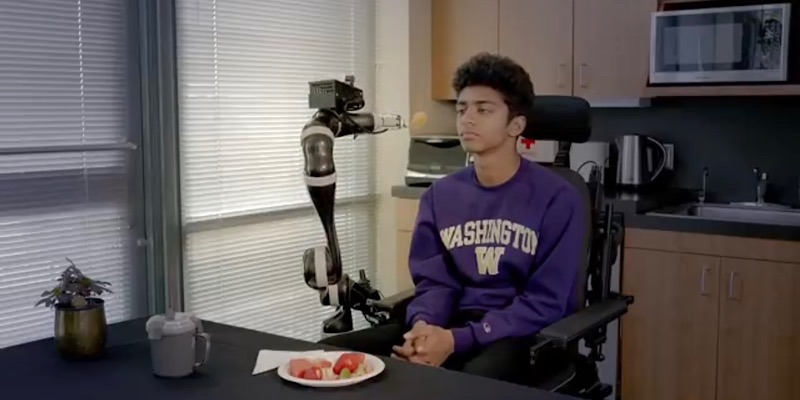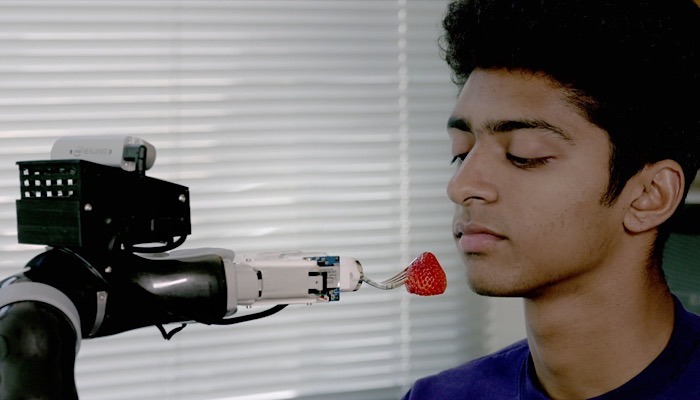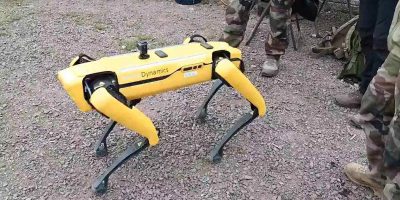
The innovativeness of the Internet of Things sometimes gets lost in the coolness factor. There’s something about these products that is just exciting. But sometimes the technology is reflecting a need in society. This is the case with an AI-powered robot that was developed to help feed people who are unable to do so on their own. It still has a little of the coolness factor, but overall, it’s fulfilling a need.
Robot Helps People Eat
Paraplegics and quadriplegics can struggle to do everyday activities on their own, including self care, feeding themselves, communicating, transportation, etc. This makes it meaningful to them when a product is developed to help them regain some independence.
University of Washington engineers developed an artificial intelligence-powered robot that will feed people who cannot do so on their own. The robot recognizes food on a plate, picks it up with a fork, and move it into the mouth of the disabled person.
The lead researcher and a university engineer, Siddhartha Srinivasa, traveled six years ago to a rehab facility. He met a young girl who asked him to develop a robot that would allow her to feed herself. He met with caregivers and others who were similarly impaired and put together a team to answer this young girl’s request.
“The system is a robot arm … integrated with a wrist-mounted camera, a tactile sensor on the fingers, and a fork gripped by the two fingers,” explained UW doctoral student Gilwood Lee, who was part of Srinivasa’s team.
The robotic arm gets mounted on the wheelchair of the individual in need and prompts them to select a food item to eat. It performs calculations and runs through algorithms, to determine the type of food and the “skewering position,” or angle the arm needs to be in to properly stab the item on the plate.

This comes as the result of the researchers realizing that the act of eating often includes the person picking up each food item a little differently with their fork.
“Based on the food identity and the skewering position, the robot moves down to skewer an item, executing the most successful skewering strategy tailored for each item,” explained Lee.
“Once the item is skewered, the arm moves around to deliver the food to the person sitting in the wheelchair. During this time, the camera keeps detecting the person’s face and delivers the food close to the mouth. The system then waits until the person has taken a bite or eats the whole food, and then repeats.”
Fulfilling a Need
The university researchers are testing the AI-powered robotic arm with caregivers and patients in assisted living facilities to make sure this fulfills the need to help those who can no longer feed themselves to make any necessary tweaks to the robot.
Independence is a big thing for those who are disabled, growing older, etc. They don’t want to have to rely on someone else to feed them and would rather do it on their own if they could. And that’s what makes this invention all that much better. It’s technology that is actually helping, while also answering a direct request from an impaired young girl.
What other types of inventions do you think could be developed to help disabled or older people be independent with basic needs? Tell us how you feel about the AI-powered robotic feeding arm in the comments.
Image Credit: Personal Robotics Lab YouTube and Erick Johnson/University of Washington via Digital Trends
Get the best of IoT Tech Trends delivered right to your inbox!









